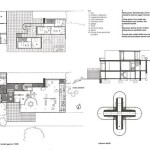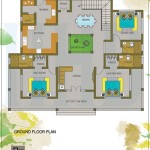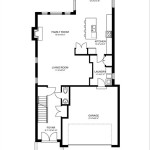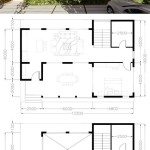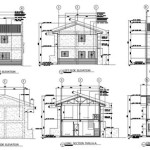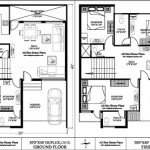Essentials of a Basic Floor Plan for a House
A floor plan serves as the blueprint for a house, dictating the layout of rooms, spaces, and their interconnectedness. Designing a basic floor plan is the initial step in constructing a house. Here are the essential aspects to consider when creating a well-conceived floor plan for a house:
1. Determine the Number of Rooms and Their Functions
Start by identifying how many rooms are needed and their intended purposes. This includes bedrooms, bathrooms, living room, dining room, kitchen, and any additional spaces such as a home office or playroom. Consider the number of occupants and their daily routines to ensure the floor plan accommodates their needs.
2. Establish the Flow of the House
The floor plan should promote a smooth flow of movement throughout the house. Plan the arrangement of rooms to allow for easy access between them, avoiding unnecessary turns or bottlenecks. Create a natural flow from the entryway to the main living areas and private spaces.
3. Optimize Natural Lighting and Ventilation
Incorporate windows and doors strategically to maximize natural daylight and ventilation. Position windows in rooms where natural light is desired, such as living rooms, bedrooms, and kitchens. Plan for cross-ventilation to promote air circulation and create a comfortable living environment.
4. Allocate Space for Storage and Utilities
Ensure adequate storage space is included in the floor plan. This can be achieved through closets, built-in shelves, and dedicated storage areas. Plan for the placement of utilities such as the electrical panel, HVAC system, and water heater in accessible and convenient locations.
5. Consider Furniture Arrangement
When designing the layout of rooms, consider the placement of furniture to optimize space and functionality. Allow for adequate space for furniture and circulation paths, ensuring that the rooms are both comfortable and practical.
6. Plan for Expansion and Future Needs
Consider the potential for future expansion or modifications to the house. Plan for additional space or reconfiguration options to accommodate changing needs over time. This can include adding a room, expanding a living area, or incorporating future-oriented features.
7. Seek Professional Advice
For complex floor plans or specific design requirements, consult with an architect or design professional. They can provide valuable insights, ensure compliance with building codes, and optimize the design to meet your specific needs and preferences.
Creating a well-conceived basic floor plan is essential for building a functional, comfortable, and aesthetically pleasing house. By considering the essential aspects outlined in this article, you can establish a strong foundation for a successful home design.

The Basic Floor Plan Of A Modern Dwelling Scientific Diagram

12 Examples Of Floor Plans With Dimensions

Floor Plans Learn How To Design And Plan

Stylish And Simple Inexpensive House Plans To Build Houseplans Blog Com

Floor Plan Creator Powerful And Design App Roomsketcher Create Simple Plans

Est House Plans To Build Simple With Style Blog Eplans Com

Small House Design 2024001 Pinoy Eplans Floor Plans

Draw Floor Plans With The Roomsketcher App

Simple House Plans Blog Homeplans Com

Low Budget Simple House Design Plans For Builders Blog Builderhouseplans Com

